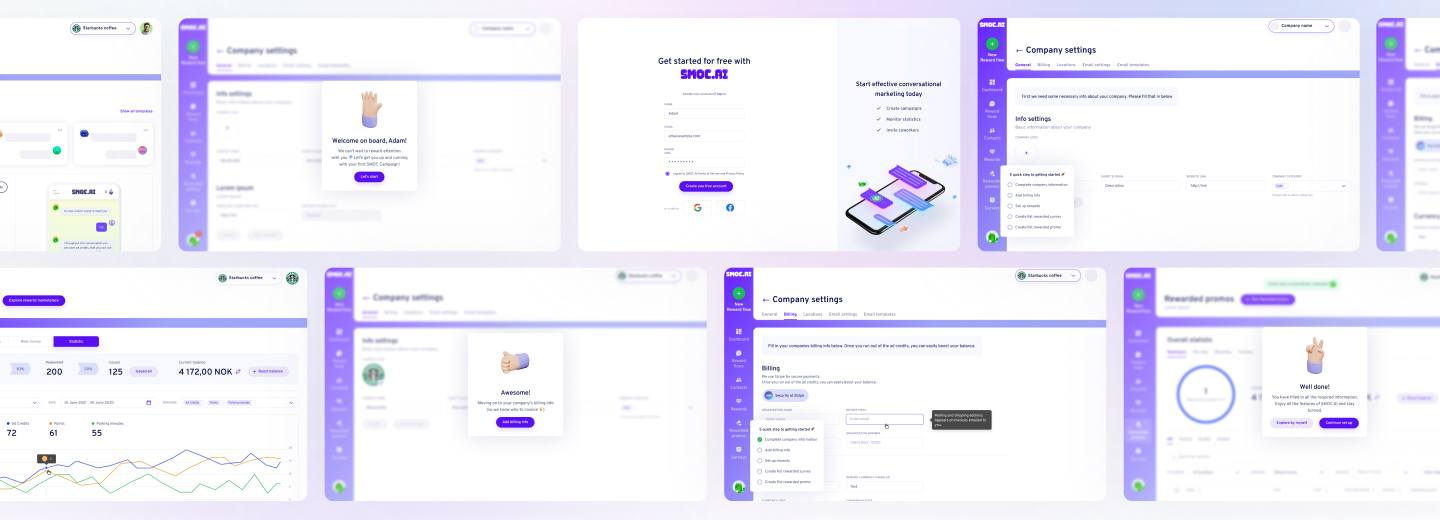No matter how excellent the product might be at its launch, there is always something that can be done better. Markets change, user needs change, and what may have been effective yesterday may not quite be on the mark tomorrow.
If you have ever thought, “How can we improve this?”- you are already on the right track. In this article, we are going to explore practical, real-life approaches to making your product better, based on the example of companies that have done it well. Whether narrowing a feature or reconsidering your entire practice, these tips are here to help you move forward with confidence.
TLDR
Pressed for time? In short, product improvement is about making your product better, be it by getting rid of bugs, by making features more powerful, or simply paying attention to what your users need. This article is an analysis of the why, how, and what’s next in enhancing a product that remains relevant, useful, and one step ahead of the competition.
what’s in the article
- What Is Product Improvement?
- Different Forms of Product Enhancement
- 8 Actionable Strategies to Elevate Your Product
- 8 Practical Examples of How Companies Improved Their Products
- Conclusion
What Is Product Improvement?
The product improvement process isn’t a single adjustment or a response to bad reviews; it is an ongoing process of making something that is already good, even better. Regardless of the type of tool, item, or service you are perfecting, the improvement process implies looking in more detail at what works, what doesn’t, and what may be done differently. It is about customer understanding, team innovation, and the desire to change. Fundamentally, it entails ensuring that your product is in line with the reality on the ground in terms of needs and expectations.
Different Forms of Product Enhancement
Not every improvement to products is the same. It can be a major redesign, but sometimes it can be a small change that makes a huge difference. The improvement of a product may come in numerous ways, based on your objectives, your target audience, as well as the response you have collected. It may be about performance, usability, design, or even sustainability, but the point is to see what elements of the product can be changed in order to better address the needs of the users and then take some appropriate action. To have a closer look at some of the most efficient types of enhancement, we should discuss their examples.
Enhancing Product Quality
When we think of upgrading a product, the first word that comes to our mind is improving quality. Quality doesn’t only mean long-lasting or material; it also means how the product performs regularly and how the product lasts. It could be fixing bugs in one of your software applications, choosing more dependable parts in a physical product, or improving products manufacturing quality. But even a little improvement in the quality can generate trust and keep your customers coming back.
Expanding or Upgrading Functionality
With time, the users might begin to demand something more, such as more choices, more flexibility, or functions that address new issues. Adding value implies improving the functionality by considering the real-life application of your product and how to add value to it without making it complicated. This could be a form of integration, customizable settings, or even new tools that will help simplify the lives of your users. When it is well done, it will make your product useful, competitive, and fresh.
Improving Visual Design and User Appeal
The first impression matters. A well-designed product not only appears good, but it also conveys the message of clarity, professionalism, and care. To enhance the visual design, it may be worth redesigning the user interface, renewing branding features, or making the product easier and fun to use. In the case of physical products, this might imply repackaging, coloring, or ergonomics. Either way, when design is improved, it usually results in an improved overall experience.
Making the Product More Eco-Friendly
Sustainability is no longer an option; it is becoming a must. Making your product greener demonstrates to the customers that you are interested in the long term. This may imply that it may change to the use of recyclable materials, less use of energy, use of less packaging garbage, or create products with longevity. Even simple measures in favor of environmental responsibility may enhance your brand image, acquire customer loyalty, and make you stand out in a busy market.

Looking to Build an MVP without worries about strategy planning?
EVNE Developers is a dedicated software development team with a product mindset.
We’ll be happy to help you turn your idea into life and successfully monetize it.
8 Actionable Strategies to Elevate Your Product
Getting better at what you do isn’t a state but a state of mind. The most profitable businesses never allow things to go wrong before they go and repair them. They keep on refining, changing, updating according to the needs of the customers and the way the market is transforming. You are a founder of a startup, product manager, or a member of a growing team; the point is that you should treat improvement as a continuous dialogue with your users rather than a project.
Here are eight practical steps you can take to take your product to the next level, whether you are developing your MVP or you are in charge of a mature product with thousands of users.
Build with improvement in mind from the early development phase
The capacity to change is one of the greatest favors that you can give your product. A study by McKinsey reveals that more than 80% of the product launches fail to achieve internal expectations, in most cases due to the stiff systems built by companies that aren’t easy to adjust. Don’t just build your infrastructure so you can get something out the door, but in a manner that iteration is simple.
This may include establishing a modular architecture, decoupling content and code, or the development of internal tools to enable your team to make changes to your site without the requirement of a complete engineering sprint. It is a bit like future-proofing: you are ensuring that the startup product you are building today won’t be a dead end tomorrow.
Gather user insights throughout the entire product lifecycle
The feedback of customers isn’t only handy but also it’s important. According to a report by Salesforce published in 2022, 66% of buyers want companies to know their individual needs and expectations. However, you cannot achieve those expectations without knowing them.
It should be a habit to gather user feedback at the product improvement cycle: when they are onboarded, after a significant update, and even in the offboarding survey when they leave. Employ a variety of techniques, including short surveys, user interviews, recording sessions, and analysis of the support tickets to collect both qualitative and quantitative data. Trends will begin to appear, and they will indicate where you need to focus your efforts.
Test and validate ideas before full implementation
Test your assumptions before betting your chips on a new feature or redesign. Conducting experiments by A/B testing, beta releases, or small-scale rollouts will allow you to make wiser choices based on real user activity, rather than assumptions.
As an example, Booking.com has the reputation of having over 1,000 A/B tests operating simultaneously. Why? Since they understand that even minor design changes can give rise to tremendous increases in conversion rates. You don’t have to conduct tests on that scale, but testing product improvement ideas in a low-risk setting allows you to identify problems early and correct your course before investing significant resources.
Promote new features to drive awareness and usage
The last but not the least among the most common errors that teams make is the silent launch of a new feature, and hoping that users will discover it by themselves. As a matter of fact, users tend to require a push. According to a 2021 investment by Userpilot, more than 60% of product features aren’t used just because users don’t know about them.
When you launch something, make it seem like a small campaign. Attract attention by using tooltips, banners in-app, email notifications, and posts on social media. And not only describe what the feature is, but why it is important. What does it do to solve problems or make the user’s life easier? This is primarily the difference between the feature that will be forgotten and the one that will become a fan favorite.
Support users during and after product updates
Updates may be thrilling to your team members, but to the users, it is often a source of confusion or resistance, particularly when the changes touch on the workflows the users have been accustomed to. This is why it is important to offer support during the rollout of updates, whether small or big.
This might mean offering a product tour, live chat support, or an article in the help center with images. Even a short video with the title “What’s new” can help to go through the transition more easily. HubSpot notes that companies with good onboarding and update assistance experience up to a 63 % boost in feature usage. The takeaway? It isn’t enough to create new features; help users use them.
Monitor how users interact with new features
When you have a new feature that is up and running, your work has only started. Monitor adoption, engagement, and retention with the help of analytics. What do the users click on? Where do they put off? What do they (or don’t) do?
Visual tools such as Hotjar, Mixpanel, or Heap may provide insights, whereas platforms like Google Analytics may allow more visibility into behavioral tracking. It is common to find that friction points and hidden opportunities are frequently discovered by observing how people use the product as opposed to how you think they will use it. This information should shape your next version.
Tap into customer ideas and keep an eye on competitors
Customers usually know things that you would never think of internally- because they are the ones using your product within the context of real life. Promote sharing of ideas with feedback forms, community boards, or user interviews. As an example, Airbnb has established a so-called Host Advisory Board to get feedback directly from the most active users, and this resulted in a change to its product that made hosts much happier.
You should also monitor the competition when your attention is on your users. What is everyone in your space offering? Which aspects are becoming popular in similar markets? You won’t have to follow the trends, and competitive awareness will tell you where you can be lagging or where you can make a jump forward.
Prioritize continuous product improvement through small, frequent updates
You don’t have to wait till a major quarterly release to achieve something significant. Indeed, most effective products were developed in small iterations and in small steps. This “ship early, ship often” approach not only assists you in acting upon feedback more rapidly but also eliminates the possibility of large rollouts breaking anything in a way one doesn’t anticipate.
Let’s take Slack as a product improvement example. They don’t save changes until some eventual overhaul; instead, they continuously release micro-improvements, keeping the platform up-to-date and sensitive. The result? Quick user response, improved agility, and a product that will always be in line with user requirements.

Proving the Concept for FinTech Startup with a Smart Algorithm for Detecting Subscriptions

Scaling from Prototype into a User-Friendly and Conversational Marketing Platform
8 Practical Examples of How Companies Improved Their Products
Sometimes, the best way to understand how to improve a product is to look at how the big players do it. The most successful companies in the world didn’t become such by chance; they listen to feedback and always improve and change with the way people use their products. There are eight practical product improvement examples of how known companies have made smart and risky changes that enabled them to remain more in front of the situation, more useful to their users, and expand their influence.
Apple
The sleek design and high-level performance have been characteristics of Apple products, but one of their biggest product upgrades wasn’t through hardware; it was when they introduced the M1 chip in 2020. Apple took a radical step and came up with its own silicon after years of using Intel processors, which exclusively suited its devices.
The result? An enormous increase in performance and battery life. M1-powered MacBook Airs were up to 3.5x faster with much less power consumption. User reviews and feedback were extremely positive, and the chip established a new benchmark of what laptops were capable of. Apple didn’t just refine a product but wrote a new script of what people could anticipate on their machines.
Amazon
Amazon is the master of small product additions. Their streamlined 1-Click Checkout is one of the best product enhancement examples. It can appear as a small improvement; however, this little optimization brought the buying process down to just a click and made a tremendous difference to the conversions and the user experience.
On the inside, Amazon did a lot of testing to minimize friction points in the checkout process. Not only did they streamline customer experience by removing the unnecessary steps and the decision fatigue, but they reportedly raised sales by billions over the years. It is evidence that minor product enhancements can create massive ripples.
Spotify
Spotify is always developing, but the personalization of products was one of the most successful product developments that was made. They introduced a curated playlist, called Discover Weekly, each based on the individual music taste in 2015. It was a game-changer.
During the initial year of its existence, more than 40 million subscribers streamed 5 billion songs on their Discover Weekly playlists. Spotify has done a fairly rudimentary thing, music recommendations, and they have managed to make it personal, smart, and even addictive. They have since then diversified into other curated playlists such as Release Radar and Daily Mixes, and converted casual listeners into loyal consumers.
YouTube
YouTube didn’t always have a smooth user experience. Creators and viewers had been complaining about ineffective discovery and the lack of relevance of recommendations over the years. Next was the algorithm change in 2016-2017, which made the watch time the priority.
Using what held the attention of the people and not what was just clicked on, YouTube started to bring forth more pertinent and high-quality videos. The result? Longer sessions, happier users, and improved conditions under which the creators can develop. This increase assisted YouTube in establishing itself as the preferred video platform in the world.
Netflix
Netflix has experienced a number of significant transformations – the DVDs to streaming, from third-party content to its own content. However, a major product enhancement was that they transitioned to adaptive streaming. Not all users may use a fast and stable internet connection, particularly in international markets. Netflix reacted to this by creating a technology that automatically scales to video quality using bandwidth.
It implied that even those users with slower networks could still stream without any interruptions. It enhanced the satisfaction of users a great deal and also enabled Netflix to enter the markets of other platforms that have failed. Adaptive streaming is common industry now, but Netflix was the original pioneer.
Duolingo
Duolingo helped me make the process of learning a new language more entertaining than tedious. However, user retention began to decrease a couple of years back. The company went deep into the data and found out that people enjoyed the idea of learning, but they didn’t return on a daily basis.
Their solution? The complete gamification redesign. They added streaks, daily XP targets, leaderboards of friends, and time-limited challenges. These alterations made the app more like a mobile game, and the level of competition was sufficient not to make its users bored. This caused a significant increase in daily active users, and Duolingo made it to the list of the most downloaded education apps in the whole world.
Canva
The idea of Canva has never changed since the beginning, which is to make design available to everyone, yet, at its very beginning, Canva was perceived as an instrument of amateurs rather than professionals. Canva reacted to feedback with a series of intelligent product additions such as collaborative design tools, brand kits, and more powerful layout capabilities.
These advances were used in closing the divide between casual users and design teams that were undertaking actual projects. In 2024, Canva boasted more than 135 million monthly users and is currently used by marketers, content teams, and even enterprise clients. That growth was all about listening to the needs of users and being able to fulfill those needs without compromising on simplicity.
Twilio
Twilio may not be a household name to everyone, but in the developer community, it is a powerhouse. Originally, Twilio was an SMS API, enabling apps to transmit text messages, but since then, it has enhanced its service by becoming a complete communications platform-as-a-service (CPaaS), which provides voice, video, authentication, and even customer data services.
Their acquisition of Segment enabled Twillio to integrate customer information across platforms so that companies could develop a personalized communication experience. Twilio has been thinking big and growing strategically by customer use case instead of remaining in its niche, and it has paid off. Uber, Airbnb, and hundreds of other big apps now use their platform.

Need Checking What Your Product Market is Able to Offer?
EVNE Developers is a dedicated software development team with a product mindset.
We’ll be happy to help you turn your idea into life and successfully monetize it.
Conclusion
It isn’t about trying to make a product perfect, but it is about remaining curious, listening to customers, and being able to transform. It doesn’t matter whether you are polishing a minor detail, redesigning your user experience, or launching something completely different; the most important thing is that you are determined to improve the lives of the individuals who use what you have created.
The reality is that there is no single formula to do this uniformly. Although what works in one company might not work in another, that is alright. Sometimes the greatest improvements can be found in making sure that you listen to the little things, learn what your users are thinking, and be willing to change even when it is awkward.
It isn’t just at the end of the day when great products are launched; they are molded, experimented, questioned, and made better with time. And if you’re looking for a team of experts who could help you launch or improve your product, EVNE Developers product development compan, is here to assist you. So take what you’ve learned, experiment thoughtfully, and keep asking the question that drives innovation: “How can we make this better?”
Since customer needs, markets, and technology change constantly. Without evolution in your product, there is a chance that your product will become obsolete. Periodical enhancements will keep you up to date, correct the pain areas, and demonstrate to consumers that you care about improving their experience.
Some of the best ways include listening to the users, analyzing the behavior, and testing ideas before going all in. Surveys of your users, A/B testing, and feedback forms are examples of tools that can assist you in identifying what isn’t working right and what could already be working properly.
Listen to the feedback and how people use it. When a feature has complaints, isn’t used much, or causes confusion, then it is a good contender to be improved. Your support team and the use of data can also point out what is slacking people.
There’s no fixed schedule, but little and frequent updates tend to bring more success than big and rare ones. Imagine it as tuning in the never-ending mode, when your product is attentive and sensitive to the needs of the users without exhausting your team and your customers.
A large one. Feedback will give you an insight into what users desire, what is annoying them, and what your product can improve on. Taking an action with that input not only makes the product great, but it also establishes trust and loyalty.

About author
Roman Bondarenko is the CEO of EVNE Developers. He is an expert in software development and technological entrepreneurship and has 10+years of experience in digital transformation consulting in Healthcare, FinTech, Supply Chain and Logistics.
Author | CEO EVNE Developers


















